
Capstone Day celebrates the academic accomplishments of the senior class, an annual tradition at Scripps since 2009. Each May, the Scripps community gathers to support the senior presenters and applaud the interdisciplinary collaboration among students and faculty. Capstone Day presentations highlight the best senior theses from a range of disciplines as nominated and selected by Scripps faculty.
This year, 95 seniors were chosen to present their original research on Capstone Day, May 5. Below are a few excerpts from some of the daylong event’s presentations:
Hannah Taylor ’16, Cognitive Neuroscience
Are Coloring Books Really Just for Kids? Investigating Possible Effects of Specific Pattern
Coloring on Conceptual, Physiological and Behavioral Aspects of Anxiety
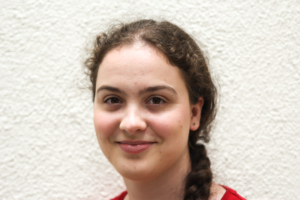
My own personal experience with coloring is that it is a useful tool to combat stress and anxiety, but I wanted to see if this is true more generally. I asked subjects to complete self-report surveys and then connected them to electrodes and a respiration belt to measure heart rate variability and respiratory sinus arrhythmia while they either free colored or colored a mandala. Results from both self-report and physiological data indicated that coloring did not significantly reduce anxiety. However, it is possible that further studies could produce significant results in support of specific pattern coloring.
Chandra Dickey ’16, History and Politics
Bridges Not Pedestals: Purpose, Reactions, and Benefits of Three Black Liberal Arts Institutions in Atlanta, 1880s–1920s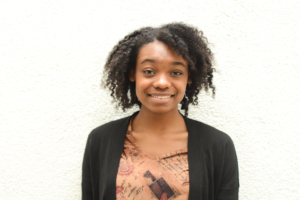
I never considered going to a historically black college, and I wanted my thesis to cover these institutions, as they are often deemed integral to the black community. I’m from Atlanta, and the colleges are often seen as the pinnacle of black higher education—Spelman is the number one historically black college in the nation. So I wanted to think about the tensions surrounding these institutions’ creation and the experiences of their students.
My project pushed me to think about the diversity of experiences black people have in the U.S., how institutions of higher education influence black culture, and how black American culture might differ if these institutions did not exist.
Katherine Goree ’16, Economics
Battle of the Beds: The Economic Impact of Airbnb on the Hotel Industry in Chicago and San Francisco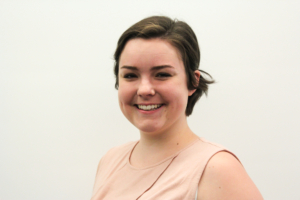
My thesis measures the effects of Airbnb on hotel occupancy rates. In the past I have enjoyed staying at Airbnbs, but I have also read various news articles about the controversy surrounding the company and its relationship with hotels. My research shows that Airbnb has not had a significant negative impact on hotels in San Francisco, but has had a marginally significant negative impact on hotels in Chicago.
Kayla Lemus ’16, French and Spanish
Le roman graphique comme lieu propice pour repenser l’identité d’un point de vue postcolonial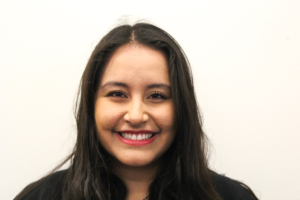
My inspiration came from my study abroad experiences in Rabat, Morocco, and Paris, France. I became interested in the ways that colonialism affects the way that marginalized communities view their identity in this postcolonial moment. For my thesis, I looked at graphic novels as a site for rethinking identity from a postcolonial perspective. My research made me reflect on not only the Arab and French contexts, but also my own identity as a daughter of Mexican immigrants growing up in the U.S.
Charlotte Startin ’16, Environmental Science
The Effects of Light Pollution on the Foraging Behavior of Calypte Anna and Selasphorus Sasin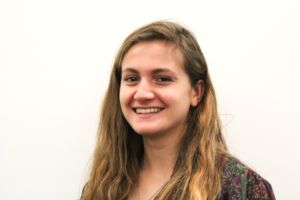
My thesis examines the effects of artificial light on the timing of foraging in Calypte anna and Selasphorus sasin, two species of hummingbird native to Southern California. I am interested in animal behavior, especially the complexity of behaviors in birds that increase fitness and how they respond to changes in the environment due to anthropogenic impacts. My research showed that wildlife is incredibly resilient to habitat loss, pollution, and other issues that humans cause. However, there is a threshold, and so it is important for us to take efforts to protect species and coexist with nature.
Melissa Móntez ’16, Chicanx-Latinx Studies
Let Your Panza Be Your Guide: Decolonizing Fat in Chicanx Art and Literature
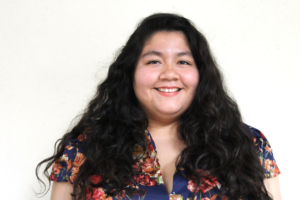
Through Chicanx, queer, and fat studies, my research bridges a gap between Chicana feminist work and fat studies. I argue that The Panza Monologues and Laura Aguilar’s Nature Self-Portrait #4 are sites of fat Chicana artivism that call for body liberation, respond to the “normative body” required by a colonial legacy of symbolic and physical violence against Chicanx women, and create possibilities for further creative artistic and literary work centered on fat Chicanxs. I am inspired by all of the rad fat femmes in the world who take up space and are on very long journeys to love themselves.
Lauren Silver ’16, Anthropology
Alcatraz and the Contemporary Carceral Landscape: A Counter-Visual Analysis
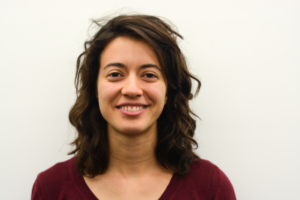 My thesis is about the way penal tourist sites such as Alcatraz normalize the contemporary carceral state. I am fascinated by the way a cultural site is also a site that performs ideological work. In writing my thesis, I learned that research is about process—the Latin root of essay means “to try,” which makes sense because this experience is about grappling with complex ideas and working through them.
My thesis is about the way penal tourist sites such as Alcatraz normalize the contemporary carceral state. I am fascinated by the way a cultural site is also a site that performs ideological work. In writing my thesis, I learned that research is about process—the Latin root of essay means “to try,” which makes sense because this experience is about grappling with complex ideas and working through them.
Corinna Fukushima ’16, Biology and Bioethics (Self-designed)
Autonomy and Distributive Justice at the End of Life
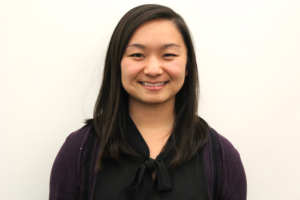
As an ethics intern in Washington, D.C., at the Washington Hospital Center, I got to see a lot of the ethical issues that healthcare professionals in intensive care units have to face daily, such as whether a person should receive aggressive treatment or how long should they should receive certain treatments for, especially in a resource-limited healthcare setting. Seeing these problems from the medical team’s perspective inspired me to look deeper into how patient autonomy is impacted by resource limitations, especially as it relates to end-of-life treatment and care.
Caitlyn Marianacci ’16, Art History
Old Masterpieces, New Mistress-pieces: Cindy Sherman’s Reinterpretations of Renaissance Portraits of Women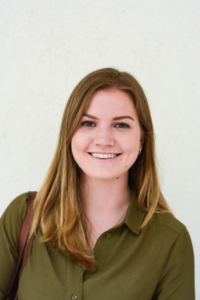
I studied abroad in Florence and had taken classes on Renaissance art, but was also considering a more contemporary topic for my thesis. I decided to focus on eight photographs by American artist Cindy Sherman that are part of her History Portraits. As a late twentieth-century female artist reimagining portraits of women by male artists of the Renaissance, Sherman subverted the idealization of the paintings with humorous and grotesque distortions to reveal the suppression of women and return power and individuality to the female subjects.
I didn’t have much faith that I would be able to complete a thesis, but once I got into the research I became fascinated by my topic and all that I was learning about. I became passionate about the work, and that made it enjoyable.
Madison Welsh ’16, French Studies and Politics
Charlie Hebdo: The Politics of French Identity and Exclusion
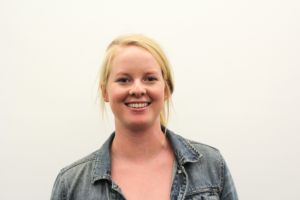 I am a dual major in French studies and politics, and I wrote my thesis on the Charlie Hebdo attack and identity politics in France. Millions around the world defended the right to free speech by declaring Je Suis Charlie. My thesis discusses narratives of French identity at play within the Je suis Charlie movement, including what it means to declare oneself Charlie as well as who was not Charlie, and why.
I am a dual major in French studies and politics, and I wrote my thesis on the Charlie Hebdo attack and identity politics in France. Millions around the world defended the right to free speech by declaring Je Suis Charlie. My thesis discusses narratives of French identity at play within the Je suis Charlie movement, including what it means to declare oneself Charlie as well as who was not Charlie, and why.
I was interested in Charlie Hebdo particularly because it is a recent event, and there isn’t a lot of deep analytical literature on it yet, so I thought that was something I could carve out on my own.
For more about the Class of 2016, click here.

